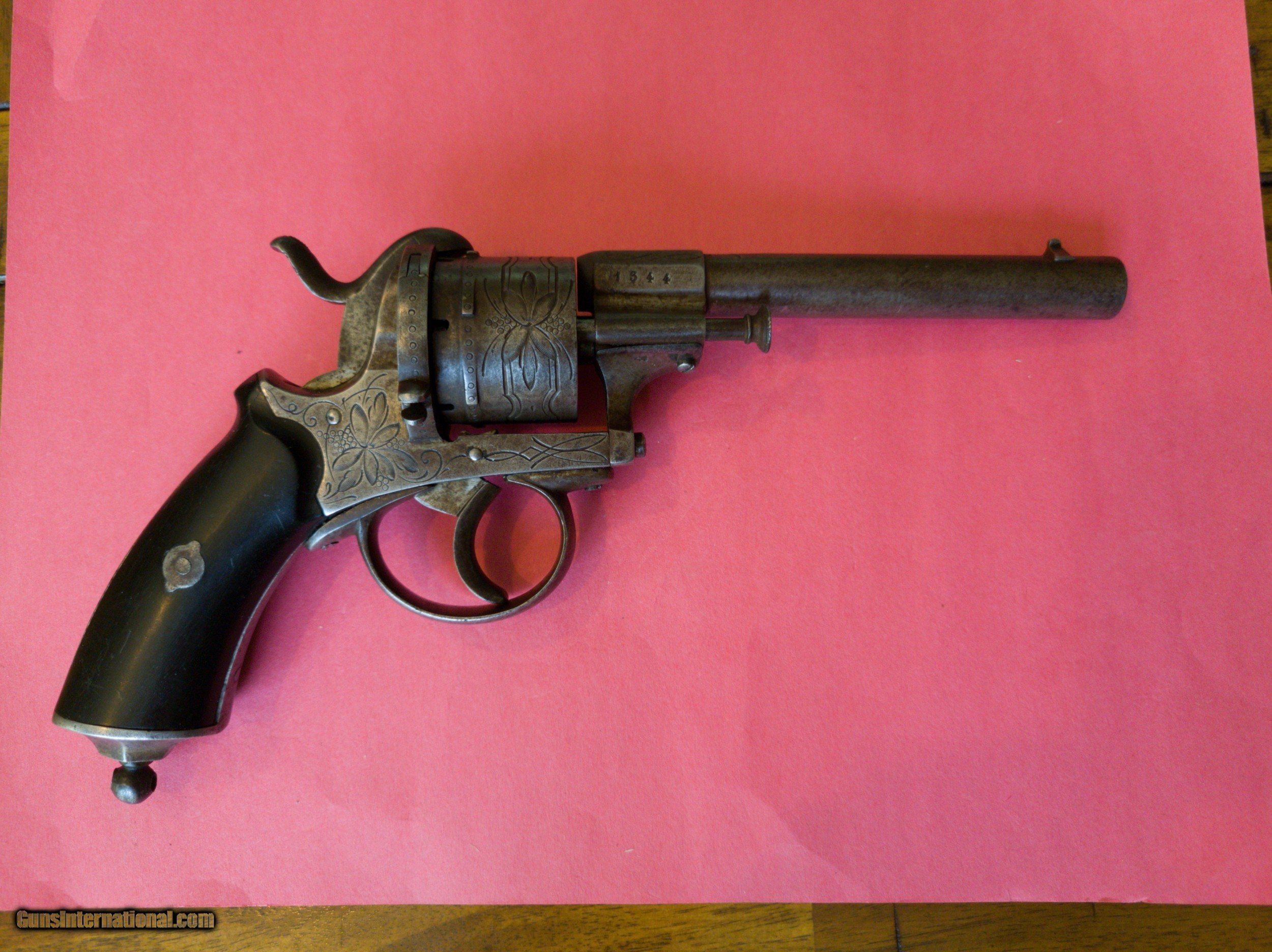

- #Lefaucheux revolver octagon barrel 9mm pinfire full#
- #Lefaucheux revolver octagon barrel 9mm pinfire license#
- #Lefaucheux revolver octagon barrel 9mm pinfire plus#
Production stopped on this gun in 1960 in Denmark but continued under license to Indonesia until the 1970s.

Many South American countries used this gun as do many other countries around the world. Marked “MADSEN-SETTER” on left front side of receiver. Designed to be used on a tripod for sustained fire, it had a rate of fire of 650 to 1000 rounds per minute (adjustable). Found all over the world during a 50-year period.įirst produced in 1952, this belt-fed machine gun is chambered for the 7.62x51mm NATO cartridge. Marked “MADSEN MODEL” on the right side of the receiver. It is fitted with a 22.7" barrel and a top feeding 25-, 30-, or 40-round magazine. It is chambered for several calibers from 6mm to 8mm. This was the first practical light machine gun. During the German occupation in WWII, the Germans reintroduced the rifle for its own use. Approximately 140,000 of these rifles and carbines were manufactured prior to 1930. These guns are marked prior to 1910 “GEVAERFABRIKEN KJOBENHAVN” over “M89” on the left side of the receiver.
#Lefaucheux revolver octagon barrel 9mm pinfire full#
There were a number of different carbine versions but all of these were full stocked and fitted with 23.5" barrel with bayonet lugs on all but one variation: the artillery carbine (see below). A flush loose-loaded box magazine was used. The barrel is fitted with a full-length metal handguard. Chambered for the 8x58Rmm cartridge, the rifle was fitted with a 33" barrel with full stock and no pistol grip.

#Lefaucheux revolver octagon barrel 9mm pinfire plus#
It used a single forward bolt locking lug plus a bolt guide rib. This rifle was developed by Ole Krag and Eric Jorgensen. NOTE: All Danish Krags are chambered for the 8x58Rmm cartridge. Prices listed below are for unaltered Danish Krags. For those collectors who are interested in the Danish Krags, the only major difference, other than caliber, lies in the operation of the loading gate. models and prices see United States, Rifles, Krag Jorgensen. It was standard issue in some form through WWII. The Krag rifle was developed in Norway and first adopted by Denmark. Issued to the Danish navy from 1871 to 1882. Built by the Belgian firm of Auguste Francotte. This 6-shot revolver was built on a Lefaucheux-Francotte solid frame fixed cylinder with non-mechanical ejection. The proof marks on barrel and cylinder consist of a crown over EL and indicating revolver produced in Belgium. Marked on the left side of the barrel breech E. In the late 1940s the Danes adopted the SIG 9mm Model 47/8 pistol (P-210-2). 32 caliber pin fire double action revolver. They also used the Swedish Model 40 Lahti, called the Model 40S by the Danes. In addition to the handguns listed below, the Danes used the Browning Hi-Power 9mm pistol designated the Model 46. Following the end of the war, Denmark joined NATO in 1949 and in 1973 joined the European Union. Denmark maintained a peaceful coexistence with its European neighbors until it was occupied in 1940 by the German army. After losing part of its territory to Prussia and Austria in 1862, Denmark concentrated its energies on improving its domestic, economic, and social conditions.


 0 kommentar(er)
0 kommentar(er)
